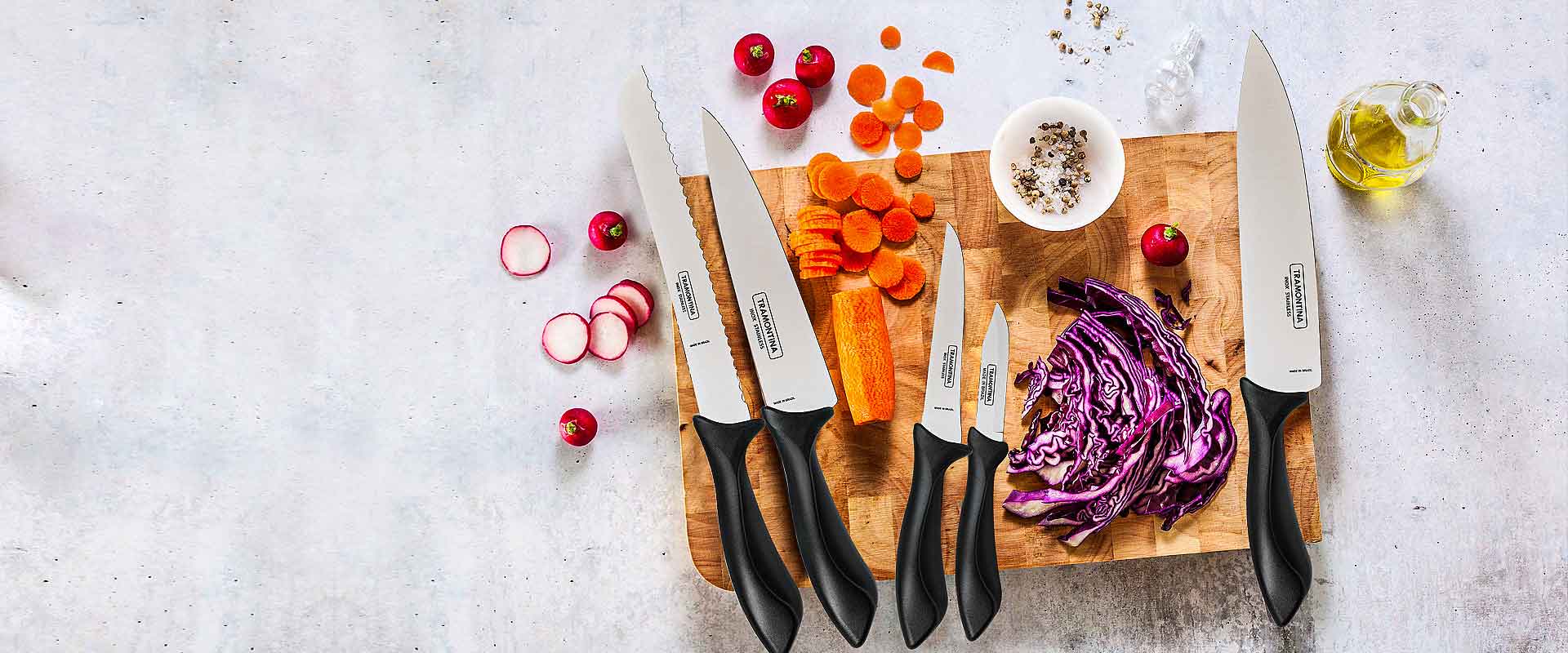Before you spend a fortune on random kitchen knives, it is important to know the difference between each one and its respective uses before investing in a good set. Being able to work with a variety of knives can make your time in the kitchen more productive, easier, and definitely more fun.
We compiled a list of essential knives and their uses every home needs so you can equip your kitchen with the most efficient knives for daily use.
1- Chef’s Knife
A chef’s knife is considered a classic in every knife collection. The recommended chef’s knife is between 8 and 10 inches long, which may seem longer than most knives you’ve previously used.
It would help if you had a classic chef’s knife in your collection. The recommended chef’s knife is between 8 and 10 inches long, which we acknowledge may be a bit longer than most people are used to at first. However, the longer edge makes the knife more versatile, safer, and practical.
In the kitchen, a chef’s knife is the tool of choice for more than 90% of daily tasks, including most of the fruit, vegetable, meat, and fish slicing. It should not be used to butcher or carve poultry, peel large vegetables such as butternut squash, or puncture cans. Due to the wide blade of a chef’s knife, it becomes difficult to use to perform tasks that call for a smaller knife.
2- Paring Knife
A paring knife picks up where a chef’s knife leaves off when it comes to cutting vegetables and fruits. As a result of the paring knife’s 3 1/2-inch blade, it’s an excellent tool for any food that requires attention to detail.
Use it to grate garlic, remove the hull from strawberries, and peel fruits and vegetables that would be too small for an 8- or 10-inch blade.
Try to stay away from using a paring knife to cut very hard vegetables. Due to the lighter weight of this knife, it may be necessary to apply more pressure or tighten your grip while cutting. Any time you find yourself exerting pressure, you’re probably not doing it right. A forced cut indicates that you are not using the right blade for the job. It also puts you at risk for injury if the knife slips during the cut.
3- Serrated Knife
Most people think of serrated knives when they think of cutting bread, which is why they’re also called bread knives. But another way of looking at it is: a chef’s knife with a toothed blade can do almost anything that a straight blade can’t.
An average blade length of 6 inches makes a serrated knife ideal for cutting not only bread but also layers of cake. Jagged edges can grip and penetrate slippery surfaces that flat blades would usually slide across. While flat blades of knives would slide and slide across them, making them difficult to work with.
4- Boning Knife
Any fish, meat, or poultry of any size can be cut up with a boning knife, whether it’s a 3-inch anchovy or 150-pound side of pork. Straight-edged knives are common. In the body, however, there is no such thing as a straight line, so a blade that can move and flex is required.
A boning knife allows you to do so. Instead of cutting through bones, boning knives should be used to cut around them. With the right flexibility, a boning knife can separate meat from the bone and cut through cartilage.
5- Honing Steel
Honing steels may not be knives, but they’re still an essential part of your knife set. If possible, honing steel will keep your knives sharp at all times. It is probably the second most crucial kitchen tool after a chef’s knife.
Sharper edges and cleaner cuts result from running your knife along a piece of steel to realign the teeth (or fibers) on the blade. As much as you should be honing your knives after using them, we also recommend that home cooks have their knives sharpened by a professional once a year.
This tool can be used with any blade with a straight edge, such as an ordinary chef’s knife, but it shouldn’t be used on serrated knives because the teeth won’t glide smoothly across it.





